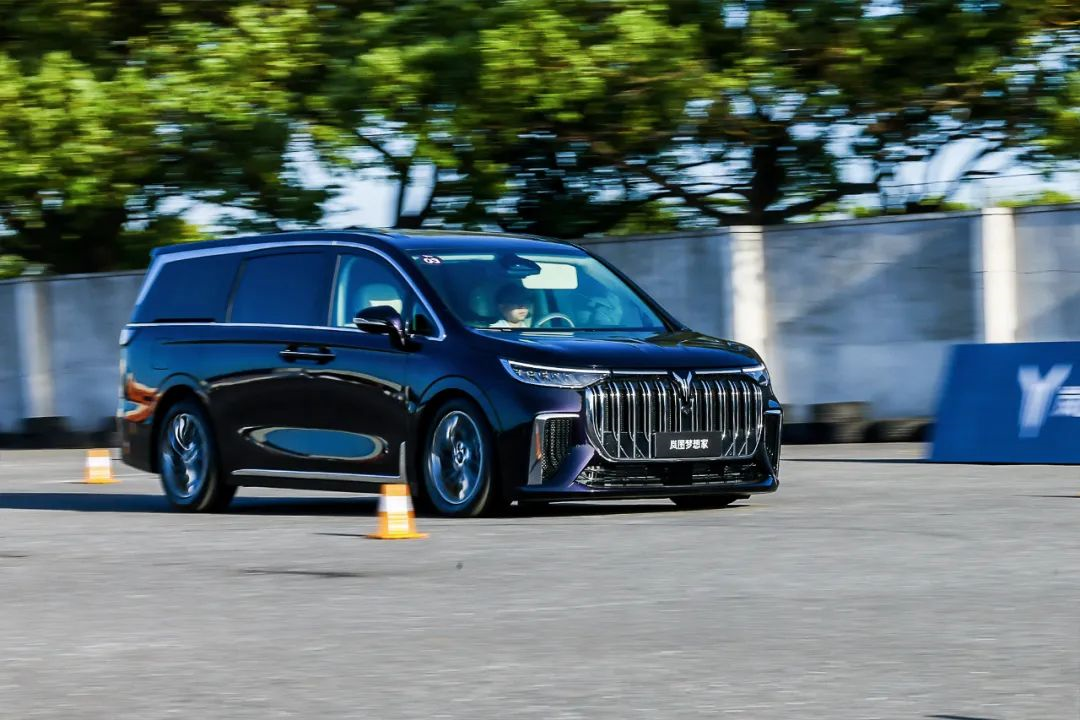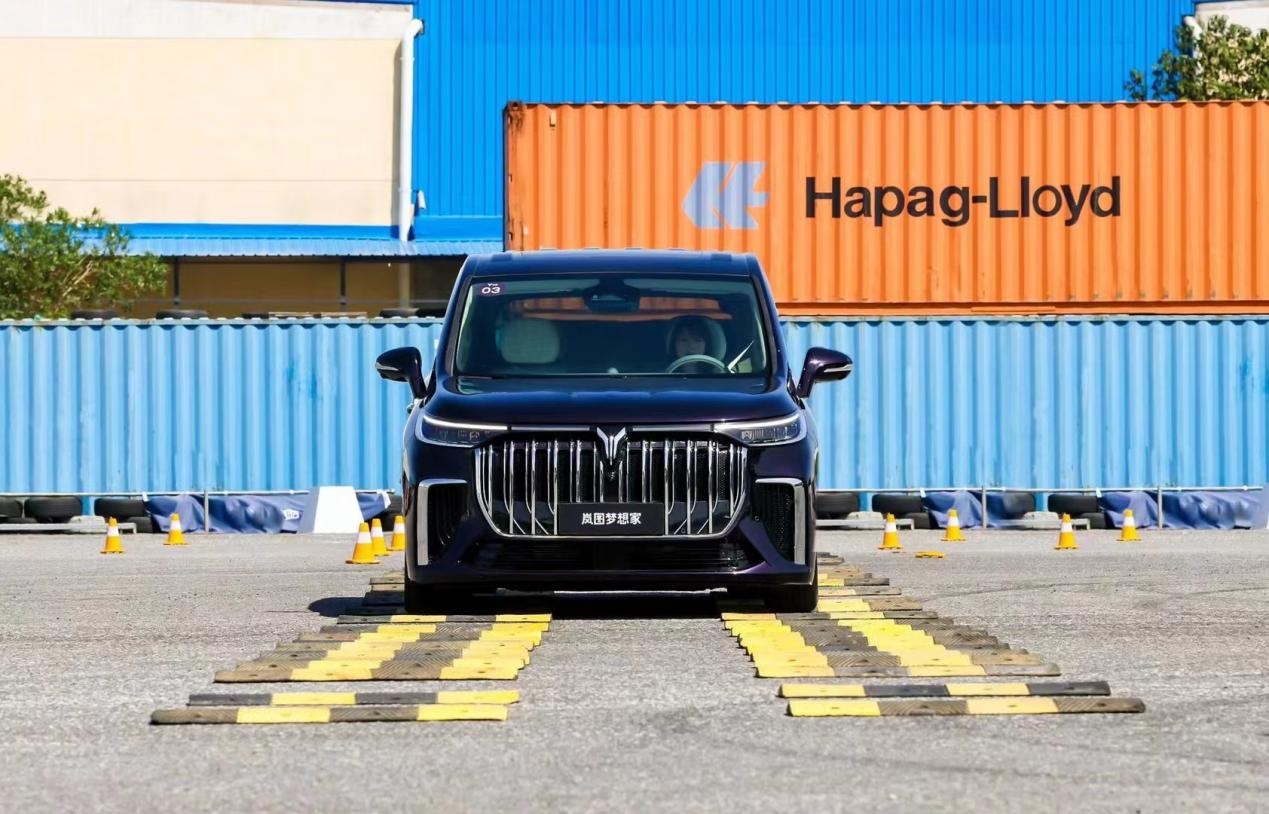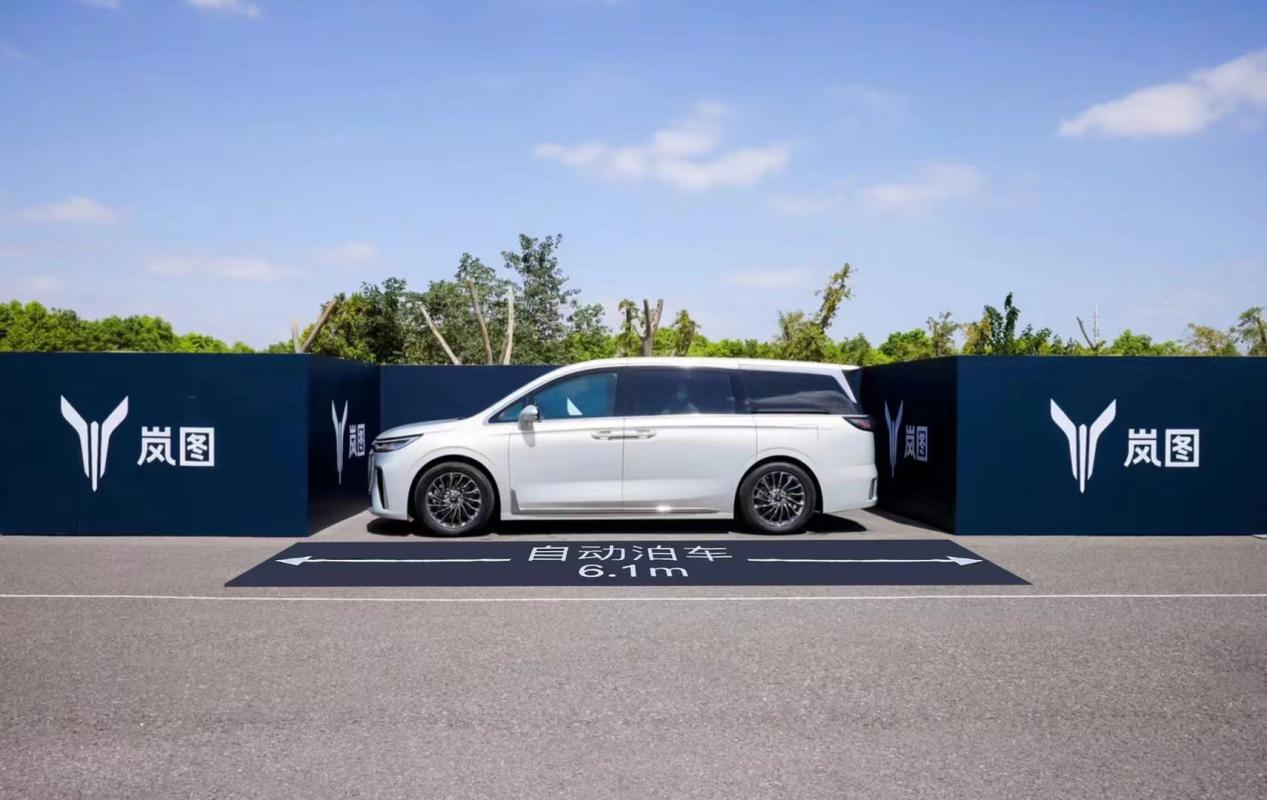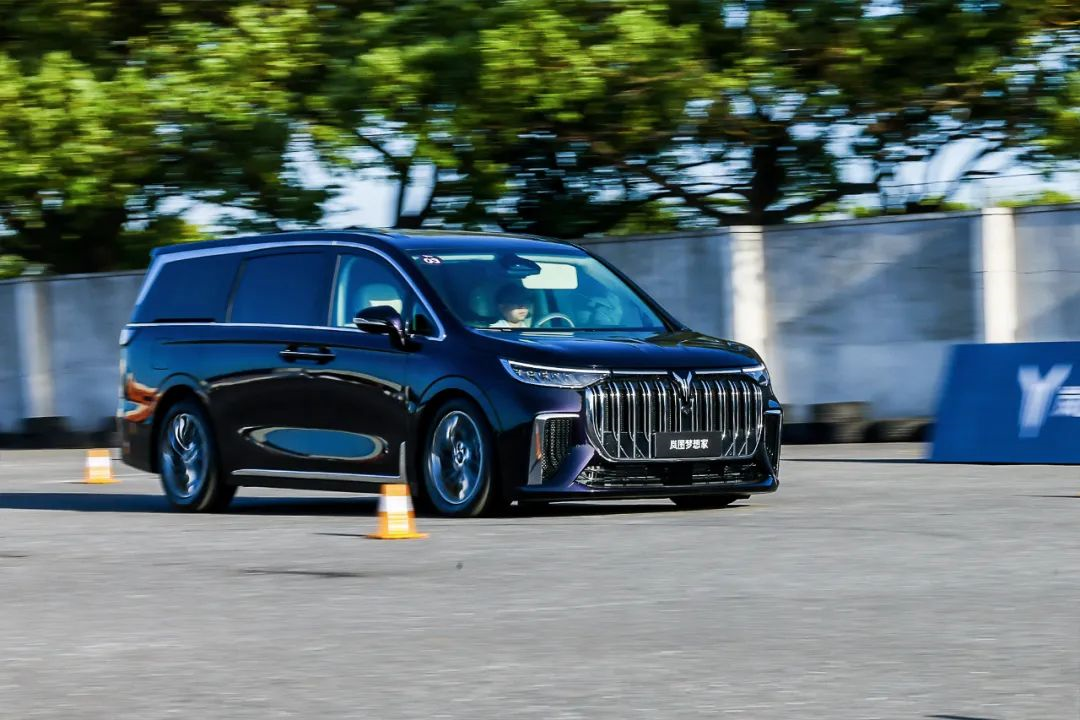Issue 8
Since the launch of the “Electric Luxury Flagship MPV” LanTu Dreamer, it has been mistakenly believed by the public that its selling points are only comfort and luxury, without realizing that it is also a “seed” player in terms of handling.
Recently, in order to fully demonstrate the strong product power of the MPV, a smart driving event was held at LanTu Motors, where full-scenario demonstrations of automatic parking and remote parking scenes were performed, along with testing items such as zero to 100 acceleration, full-brake deceleration, serpentining around pylons, and bumpy road conditions. LanTu Dreamer was compared with the market-leading competitors Buick GL8, Toyota Sienna, and Toyota Alphard.
After the test, I have to say that perhaps the product power of LanTu Dreamer still needs improvement, but my strong impression of the Buick GL8 and Toyota Sienna has completely disappeared. New energy is indeed a weapon to end foreign cars’ dominance.
Direct Hybrid Drive System
The test-drive model for our event was the low-carbon version of the Dreamer, which is based on the intelligent multi-mode drive hybrid version.
Regarding the intelligent multi-mode hybrid system of the LanTu Dreamer, in the words of LanTu Motors’ CEO Lu Fang: “Even Autohome and DCD’s model databases cannot define us.” So, what are its outstanding features?
The LanTu Dreamer’s intelligent multi-mode hybrid system uses the self-developed 1.5T GDI “China Heart,” which is one of the top ten engines in China. It has a maximum power of 100 kW, a thermal efficiency of 41.07%, and can switch to multiple intelligent driving modes. The comprehensive fuel consumption is as low as 1.99L/100km, and the WLTC urban fuel consumption is no more than 5L/100km. With a full tank of oil and electricity, the WLTC driving range is 750km, it can run on both gas and electricity without range anxiety, and it takes into account both power and fuel economy.
Thanks to the front and rear dual motors with a maximum power of 130 kW and 160 kW, the electric driving technology is equipped with the industry’s most efficient eight-layer flat wire motor, with a maximum efficiency>95% and a working condition efficiency of 88.2%, which effectively improves the motor power and working condition efficiency, achieving the best in the industry.
Most importantly, in terms of scenario-based usage, compared to PHEV and conventional hybrid systems, when the intelligent multi-mode drive is operating at high-speed working conditions, the 1.5T GDI engine can drive directly, reducing the energy conversion process of power generation before driving, while compensating for the disadvantage of high energy consumption of the electric motor.
Fast Running and BrakingThe LanTu Dreamer performed sufficiently fast and aggressive compared to the GL8 with a 2.0T engine and the Serena/Alphard with a 2.5L naturally aspirated engine and light hybrid.
During the straight-line acceleration process, the LanTu Dreamer’s 25.57kWh power battery pack is enough to drive the dual motors for full acceleration, with a top speed of 200 km/h and 610 N·m of torque bringing a strong push-back sensation, and almost no noise from the engine or motor is felt during the entire process.
In comparison, the acceleration test of the Buick GL8 is torturous, with not only “slow” power response but also excessive noise.
As for the question raised by everyone about whether the “25.57kWh battery pack is necessary”, it actually depends on the vehicle’s power.
First of all, for cost reasons, using a larger battery pack will inevitably raise the overall price of the vehicle; secondly, after comprehensive research, the pure electric range of 82km satisfies the daily travel needs of most users; finally, there is a balance between vehicle weight and energy consumption. As the vehicle’s weight reaches 2540kg, which is equivalent to the Mercedes-Benz V-Class of 2400kg, it is difficult to control energy and fuel consumption with a larger battery pack.
Therefore, the use of the 25.57kWh battery pack is just right.
Is the braking good when the speed is fast enough?

Due to the LanTu Dreamer’s front and rear 380mm large brake discs and front dual-piston calipers, it ensures stable continuous braking even after 10 consecutive 100km/h braking, in addition to the IPB decoupling brake pedal and wire control system exclusively for the electric drive system. In a comparison of four cars, the LanTu Dreamer won with a 100km/h-0 braking distance of only 37m. When the vehicle is non-emergency braking below 10km/h, more accurate braking force can be released, energy recovery can be increased by 15%, and the phenomenon of braking forward tilt can be suppressed, with better overall vehicle posture performance.
Maximum Comfort
The common feature of MPVs is comfort, and the LanTu Dreamer defines comfort as tested through three dimensions: primary smoothness, vibration comfort, and impact comfort. In actual use, the elements that cause the vehicle body to vibrate are complex and diverse. To cope with this, the chassis is the first and most important line of defense for vehicle comfort.
To test the comfort and smoothness of the LanTu Dreamer, a glass of water was fixed on the rear floor, and after going through ups and downs of the road, we observed which vehicle had better stability.
 After comparison, the Landtu Dreamer stands out for its outstanding performance, while the Buick GL8, Toyota Sienna, and Toyota Alphard still have room for improvement in terms of comfort.
After comparison, the Landtu Dreamer stands out for its outstanding performance, while the Buick GL8, Toyota Sienna, and Toyota Alphard still have room for improvement in terms of comfort.
Behind the outstanding comfort of the Landtu Dreamer lies its unique front double wishbone + rear five-link suspension configuration, combined with luxurious-grade chassis tuning and air suspension using aluminum alloy, providing a noticeable improvement in comfort and stability.
In particular, the air suspension matched by the Landtu Dreamer is an adaptive adjustment system that can greatly reduce the phenomena of vehicle lift and sway based on body tilt, sudden acceleration, and emergency braking, and maintain balance as much as possible.
In addition, the Landtu Dreamer also has a unique “black technology” CDC magic carpet function, which is realized by front camera sensing + controller + air suspension. The sensors in this configuration scan road conditions at a frequency of 500 times per second, and the control system feeds back to the air suspension damping at a frequency of 100 times per second to adjust it. When the road is smooth, the system will automatically increase the damping to maintain stability; when a bumpy road section is encountered, the system will reduce the damping and improve the suspension’s shock-absorbing capacity.
Therefore, in actual tests, although the Landtu Dreamer’s body still has some undulations, its shock absorption performance is significantly higher than the Buick GL8, Toyota Sienna, and Toyota Alphard.
At the same time, compared with the Toyota Alphard which uses front MacPherson + rear double wishbones, the Toyota Sienna which uses front MacPherson + rear E-type multi-link, and the Buick GL8 which uses front MacPherson + rear-link suspension, the front double wishbone + rear five-link suspension provides better vehicle support for the Landtu Dreamer, making drivers significantly feel excellent vehicle tracking during acceleration, turning, and emergency lane changes. At 40km/h on sharp bends, the lateral tilt force inside the vehicle is not significant, and combined with the low center of gravity, it feels very much like a sedan.
The standard Michelin UC6 low-noise tire and aluminum alloy suspension are not only lightweight but also more robust, and the strong grip of the vehicle makes the body feel noticeably suppressed when cornering at high speeds, further ensuring the safety of the Landtu Dreamer.
Intelligence will become a standard feature of high-end MPVs
For a high-end MPV, is intelligent parking important?
Very important.
Perhaps because of the “stature” of the Landtu Dreamer, many people are misunderstood. It should be noted that the length, width, and height of the Landtu Dreamer are 5315/1985/1800 millimeters, and the wheelbase reaches 3200mm, ensuring interior comfort but losing out on the convenience of parking.
 To solve this problem, the Voyah Dreamer has matched APA Full-Scenario Automatic Parking and RPA Remote Control Parking, which are different from ordinary parking functions. The Voyah Dreamer supports horizontal, vertical, diagonal, and unmarked line parking spaces in low-light environments, effectively solving the pain points of low automatic parking recognition rate and poor parking experience. In addition, when encountering narrow parking spaces, the Voyah Dreamer can achieve unmanned fully automatic parking in and out; when encountering pedestrians or obstacles, the system will terminate actively.
To solve this problem, the Voyah Dreamer has matched APA Full-Scenario Automatic Parking and RPA Remote Control Parking, which are different from ordinary parking functions. The Voyah Dreamer supports horizontal, vertical, diagonal, and unmarked line parking spaces in low-light environments, effectively solving the pain points of low automatic parking recognition rate and poor parking experience. In addition, when encountering narrow parking spaces, the Voyah Dreamer can achieve unmanned fully automatic parking in and out; when encountering pedestrians or obstacles, the system will terminate actively.
In actual experience, the safety of Voyah Dreamer’s automatic parking is good, but the stability of the function needs to be improved.
It is also regrettable that we did not experience the NVS Intelligent Active Night Vision System, which can only be easily demonstrated on the road at night.
Regarding the NVS system, in simple terms, this is a night vision system that presents an active reminder function through infrared cameras, processors, and software algorithms. It brings together 159m night vision infrared imaging, glare suppression, and 6-layer global leading coating technology, which can standardly identify pedestrians and bicycle pedestrians on both sides of the road and crossing the lane, achieving night imaging up to 150m and recognition distance of 90m with a recognition rate of up to 95%.
The voice of electric power
In the segmented markets such as small cars, sedans, and SUVs, China’s new energy vehicles are rising comprehensively, except for Tesla, and foreign cars can now be said to have no capable competitors.
What about the MPV market?
Previously, the mid-to-high-end MPV market in China was always dominated by Amercian MPVs (especially Buick GL8) and Japanese MPVs, with few Chinese cars breaking through.
Nowadays, the era of new energy vehicles has arrived. The accumulation and breakthrough of China’s new energy vehicle three-electric technologies have laid the core technical foundation for the overall rise of Chinese cars, and Chinese cars are able to break through one by one in various segmented markets, which is one of the key elements.
For upward Chinese cars, the MPV market is also a great opportunity.
Currently, for the high-end new energy MPV market, high-end brands such as Hongqi, Voyah, and Zeekr have already foreseen relevant models. Among them, the Voyah Dreamer has been launched, which means that it will become the pioneer in China’s high-end MPV breakthroughs.
Based on this experience, I think the Voyah Dreamer is entirely capable of launching a war against those traditional giants.
The new energy war has already reached the high-end MPV market…
This article is a translation by ChatGPT of a Chinese report from 42HOW. If you have any questions about it, please email bd@42how.com.
